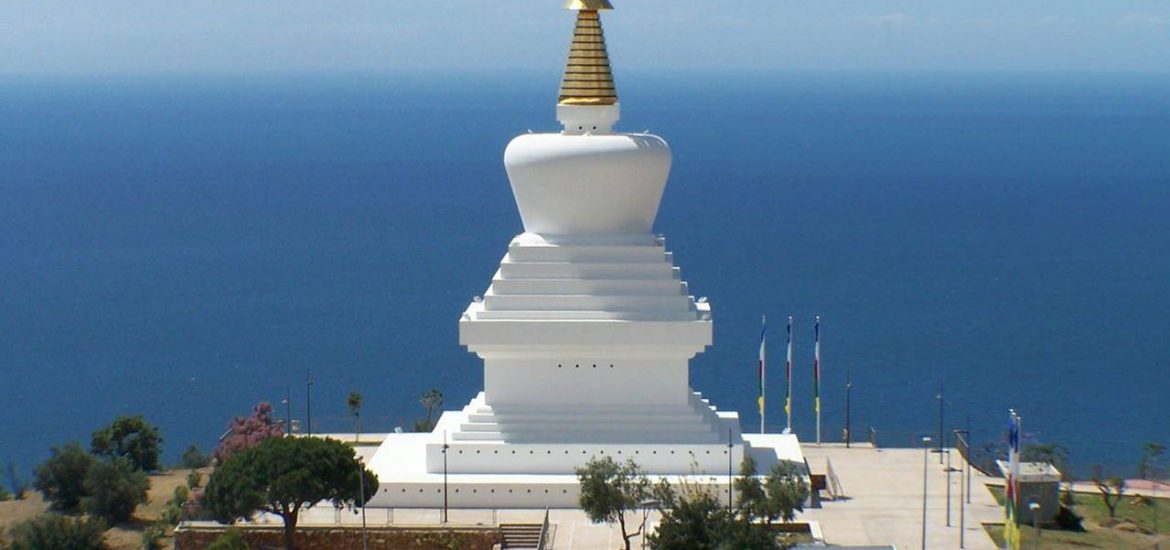The term “Buddhism in the West” can be rather misleading. Too often, this umbrella term denotes Buddhism in the Anglophone world; namely, Buddhism in the US, Canada, and possibly Britain and Australia. But below the US, in Central America and South America, as well as in the former colonial heartland of Spain, the sphere of Hispanophone Buddhism, from practitioners to scholars to interested seekers, is a rich, vibrant, and diverse world that has only barely begun to enter global awareness.
In this ongoing series of posts, I aim to share, with the help of our friends at Buddhistdoor en Español (BDE), the wonders of the Hispanophone Buddhist world: from the amazing teachers blazing a trail across many countries, to the sincere and supportive sanghas growing in unlikely locations; and from the temples, monasteries, and stupas being built all over the South American continent, to the scholars helping Spanish readers catch up in understanding the Dharmic faith tradition. BDE is Buddhistdoor’s Spanish-language platform, edited by Daniel Millet Gil PhD. Dr. Millet has steered the editorial content and direction of BDE since its inception in 2019. BDE is currently the only website devoted entirely to covering Buddhist developments in the entire Hispanophone world.
There are many reasons for the currently embryonic state of Buddhism and Buddhist Studies in Spain and Central and South America. Many of these are historical. Despite its conquests of Central and South America and imperialism in the Philippines, Spain did not colonize any Buddhist-majority country, and therefore never took part in any effort to study Asia’s religious traditions via administrators, traveling scholars, or archeologists. This is quite different to the experience of the British in India or the French in China. Until recently, there were no Spanish-written dictionaries or compendiums by Spanish counterparts to French Sinologists like Édouard Chavannes or Paul Pelliot, or archaeological surveys carried out by a Hispanic Aurel Stein.
In the field of education, the Catholic Church in Spain and the colonies enforced much stricter policies than Catholic counterparts elsewhere: Louis de La Vallée Poussin and Étienne Lamotte were famously Belgian despite holding unapologetically colonialist attitudes. The Anglo-German, Francophone, and Japanese and Russian schools of Buddhist Studies developed throughout the 20th Century without significant Hispanophone contributions until well after Franco.
The nation-states that emerged after the Spanish American Wars of Independence suffered growing pains and turmoil as they navigated the extremely volatile world of the 19th Century. Spain itself had been a declining imperial power since Napoleon I, and Bourbon abdications, restorations, and ongoing civil strife led to the rise of Franco in the 1930s, who instated dictatorship until the 1970s. Spain introduced a new constitution promoting freedom of religion in 1979 – close to a full two centuries after William Jones of the Asiatic Society. Of course, there were communities and individuals doing their best before the death of Franco in 1975, but the time for true intellectual flourishing came well after Buddhist discourse outside of Asia had been firmly set by English-speaking countries.
In the contemporary world, the self-defined “Buddhists” within the Spanish-speaking population average a tiny 0.1 per cent of the population. Yet it is growing and, in an ironic sense, has plenty of room to innovate and develop, unlike the increasingly static Catholic practices that people of Hispanic heritage identify with culturally. In this series of discussions, we will traverse an immense geographic range in the Hispanic world, looking at topics raised by BDE contributors (with links to the original Spanish-language articles) and contextualizing them in the broader world of Buddhism’s development in Spain or Latin America. Karmic seeds are rarely grand or large at first, but over time they ripen and grow into a magnificent fruit.


